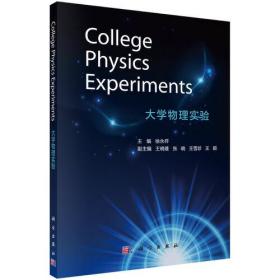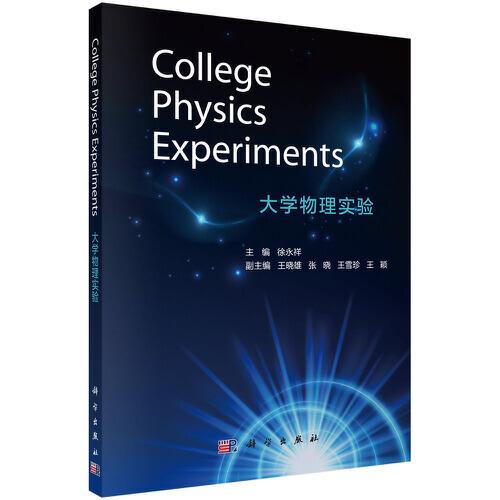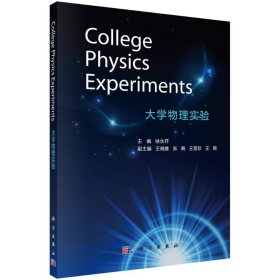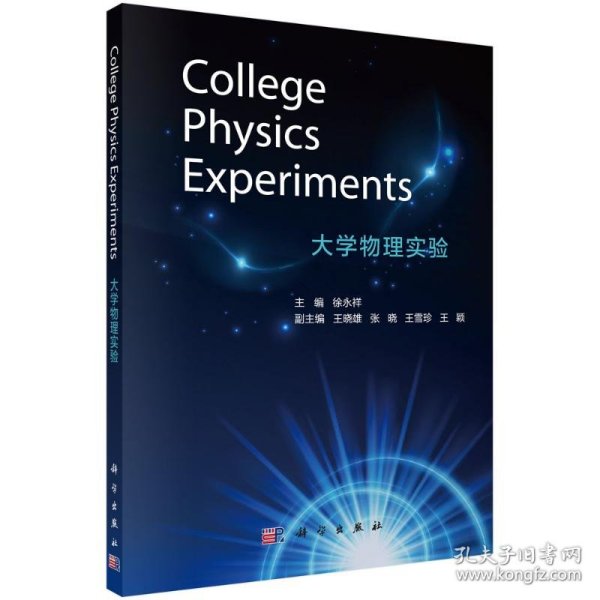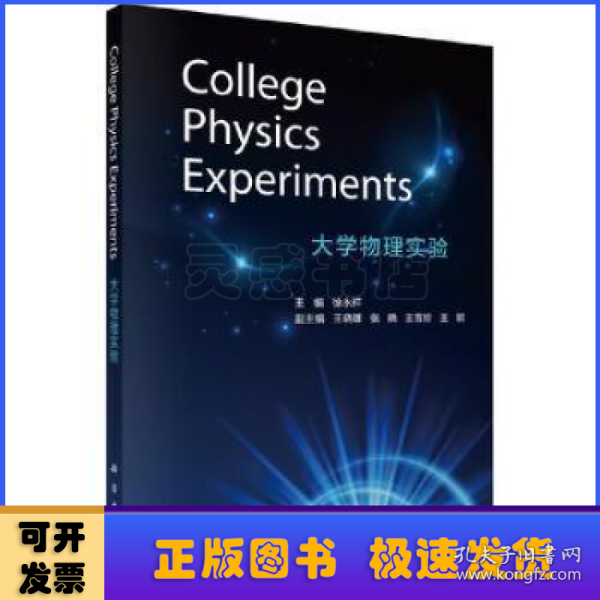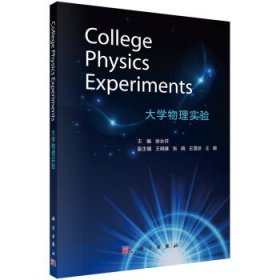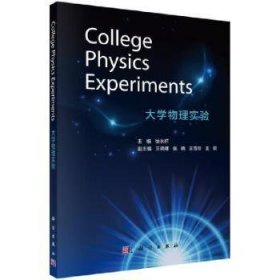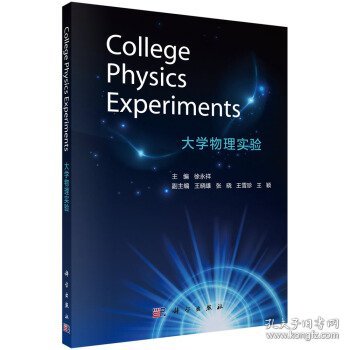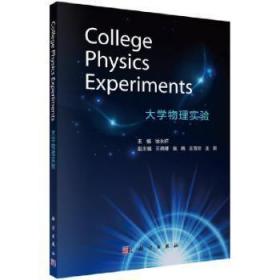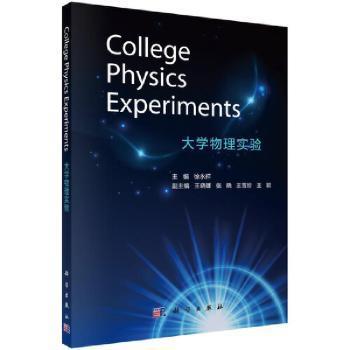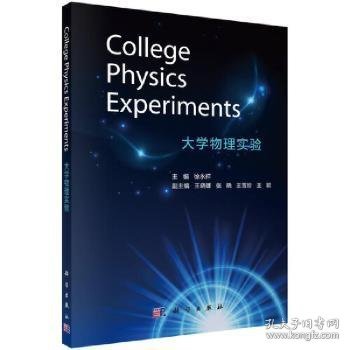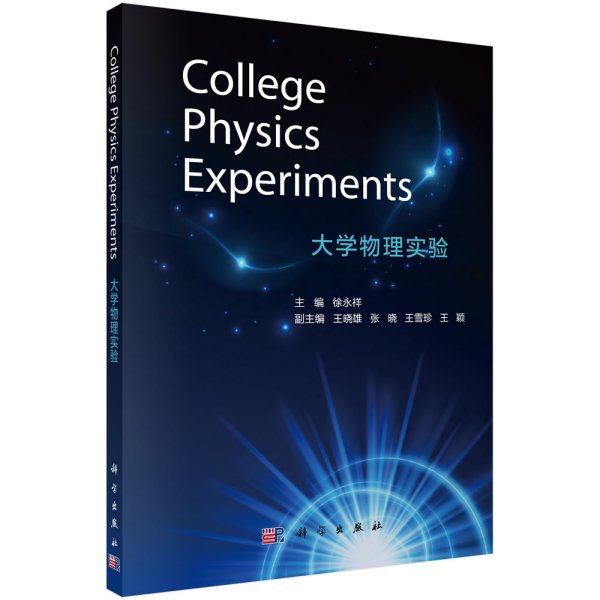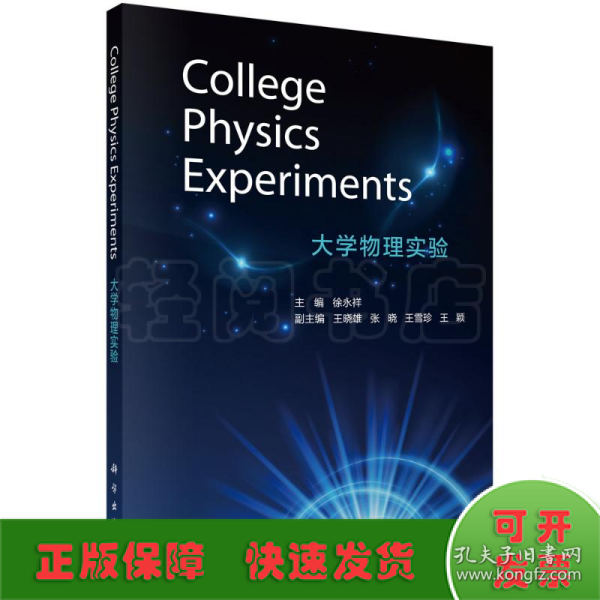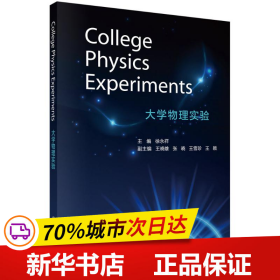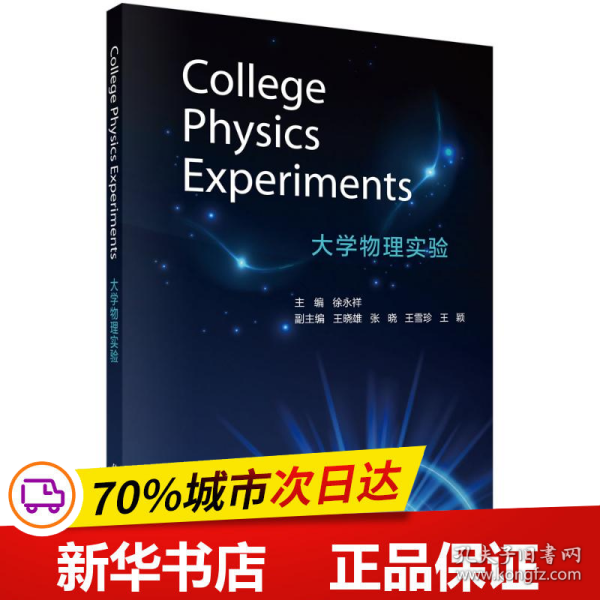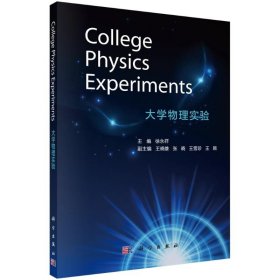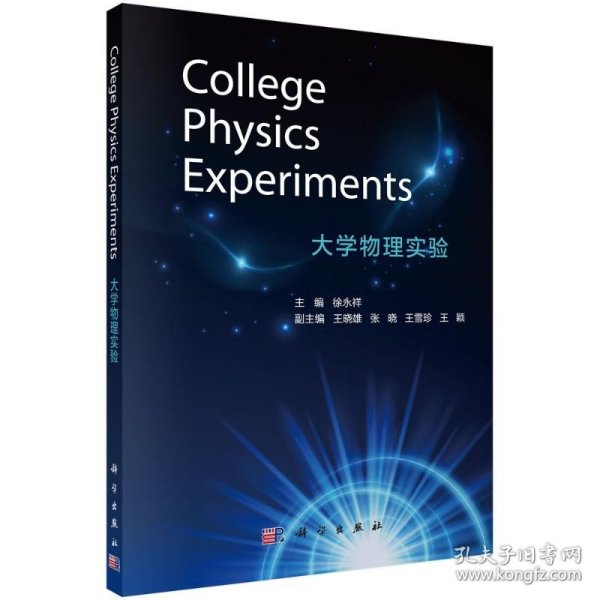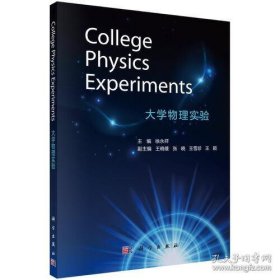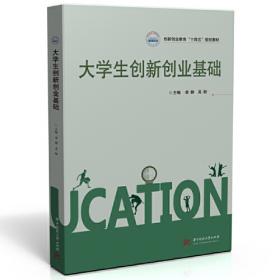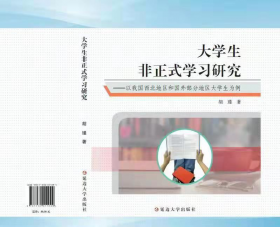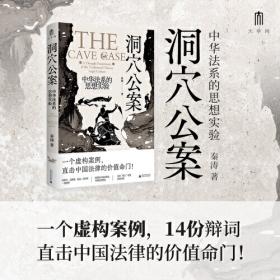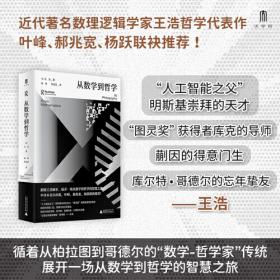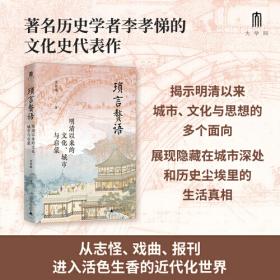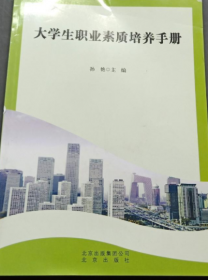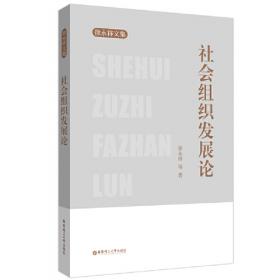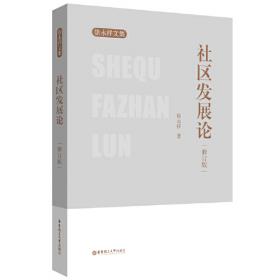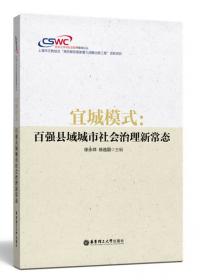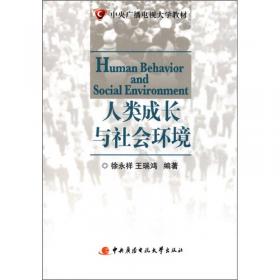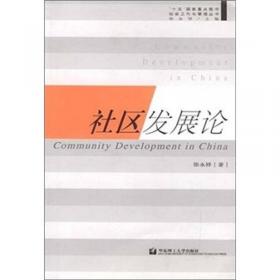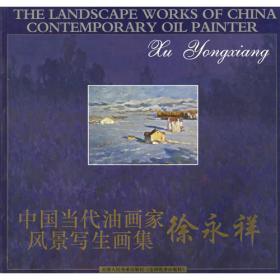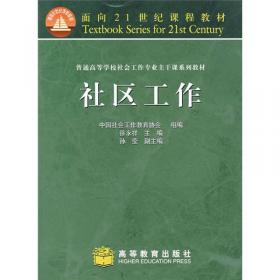大学物理实验(英文版)
出版时间:
2021-09
版次:
1
ISBN:
9787030687616
定价:
69.00
装帧:
平装
开本:
16开
纸张:
胶版纸
页数:
243页
字数:
328.000千字
1人买过
-
《College Physics Experiments 大学物理实验》是专门为理工科相关专业的国际留学生编写的大学物理实验英文教材。《College Physics Experiments 大学物理实验》以注重基础、训练能力、培养创新为宗旨,以基础—综合—提高为主线,以现有实验条件为依托,将教师的部分研究成果和部分现代实验技术融入教材,构成了涵盖力学、热学、电磁学、光学及近代物理等领域的内容体系,以层次化、递进式的编排思路,在误差理论和数据处理方法基础上,实验项目按基础与综合性实验、设计与创意性实验两大框架顺序展开。
《College Physics Experiments 大学物理实验》共分三部分。**部分是误差理论和数据处理方法;第二部分为基础性和综合性实验,共19个实验项目;第三部分为设计性和创意性实验,共12个实验项目。 Contents
Part I Theory of Errors and Data Processing Methods
1 Measurement and Error 3
2 Estimation of Measurement Error and Expression of the Result 9
3 Error Estimation for Direct Measurement 13
4 Error Estimation for Indirect Measurement 16
5 Significant Figures and Their Calculations 21
6 Commonly Used Data Processing Methods 26
7 Questions 37
Part II Fundamental and Comprehensive Experiments
Exp. 1 Forward Characteristics of pn Junction Diode 41
1.1 Objective 41
1.2 Apparatus 41
1.3 Principle 42
1.3.1 pn junction 42
1.3.2 Forward characteristics of a pn junction 44
1.3.3 Temperature characteristics of a pn junction 45
1.3.4 Methods for deducing empirical function and calculating parameters of the temperature sensor 46
1.4 Apparatus depiction 47
1.5 Procedure 49
1.6 Data processing 51
1.6.1 Data processing based on the data in Tab. 1.1 51
1.6.2 Data processing based on the data in Tab. 1.2 51
1.7 Attentions 51
1.8 Questions 52
Exp. 2 Magnetoresistance Effect 53
2.1 Objective 53
2.2 Apparatus 54
2.3 Principle 54
2.4 Apparatus depiction 56
2.5 Procedure 58
2.6 Data processing 59
2.7 Attentions 60
2.8 Questions 61
Exp. 3 Study of Forced Oscillations with Pohl Resonator 62
3.1 Objective 62
3.2 Apparatus 63
3.3 Principle 63
3.4 Apparatus depiction 65
3.5 Procedure 67
3.5.1 Free oscillations 67
3.5.2 Damped oscillations 68
3.5.3 Forced oscillations 69
3.6 Data processing 69
3.7 Attentions 71
3.8 Questions 71
Exp. 4 Thermal Conductivity Measurement of a Rubber Disk by Steady-State Method 72
4.1 Objective 72
4.2 Apparatus 72
4.3 Principle 72
4.3.1 Thermal conductivity 72
4.3.2 Thermal conductivities of different substances 74
4.3.3 Principle of thermocouples 75
4.3.4 Principle of TC-3A thermal conductivity measurement instrument 76
4.4 Procedure 78
4.4.1 Preparation 78
4.4.2 Record the thermal equilibrium temperatures and 78
4.4.3 Measure the cooling temperature versus time for the lower brass disk 78
4.5 Data processing 79
4.6 Attentions 79
4.7 Questions 80
Exp. 5 Usage of an Oscilloscope 81
5.1 Objective 81
5.2 Apparatus 81
5.3 Principle 82
5.3.1 Main structure of an oscilloscope 82
5.3.2 Operation principle of an oscilloscope 85
5.3.3 Measurement of the amplitude and period (or frequency) of a periodic voltage 88
5.3.4 Lissajous figures 88
5.4 Procedure 89
5.4.1 Observation of sinusoidal voltage signals 89
5.4.2 Observe the waveform of signals from the rectifying and filtering circuit 90
5.4.3 Observe Lissajous figures 91
5.5 Attentions 92
5.6 Questions 92
Exp. 6 Measurement of Magnetic Field Based on Hall Effect 93
6.1 Objective 93
6.2 Apparatus 93
6.3 Principle 93
6.3.1 Hall effect and the measurement of magnetic induction intensity 93
6.3.2 Elimination of side effects 95
6.3.3 Theoretical basis of magnetic field generation by electrified solenoids and Helmholtz coils 96
6.4 Apparatus depiction 97
6.5 Procedure 99
6.6 Data processing 100
6.7 Questions 102
Exp. 7 Determination of Moment of Inertia of Rigid Bodies 103
7.1 Objective 103
7.2 Apparatus 103
7.3 Principle 104
7.3.1 Apparatus depiction 104
7.3.2 Principle for measuring the moment of inertia 105
7.3.3 Parallel-axis theorem 108
7.4 Procedure 108
7.4.1 Preparation 108
7.4.2 Measure the moment of inertia J0 of the empty rotational system 109
7.4.3 Measure the moment of inertia of the rotational system with an aluminum ring 109
7.4.4 Validation of the parallel-axis theorem 109
7.5 Data processing 110
7.5.1 Calculation of the moment of inertia of the aluminum ring 110
7.5.2 Verification of the parallel-axis theorem 110
7.6 Attentions 111
7.7 Questions 111
Exp. 8 Standing Wave on a String 112
8.1 Objective 112
8.2 Apparatus 112
8.3 Principle 113
8.3.1 Mathematical analysis of standing wave on a string 113
8.3.2 Principle of the instrument for string vibration 116
8.3.3 Application in musical instruments 117
8.4 Procedure 118
8.4.1 Preparation 118
8.4.2 Measure the resonant frequencies with 2 antinodes between two wedges 118
8.4.3 Measure the resonant frequencies with 3 antinodes between two wedges 119
8.5 Data processing 119
8.6 Attentions 120
8.7 Questions 121
Exp. 9 Diffraction Grating 122
9.1 Objective 122
9.2 Apparatus 123
9.3 Principle 123
9.3.1 Grating equation 123
9.3.2 Two important parameters 124
9.4 Procedure 125
9.4.1 Adjustment of spectrometer 125
9.4.2 Adjustment of the orientation of grating 125
9.4.3 Measure the grating constant 125
9.4.4 Measure the wavelength of blue spectral lines 126
9.5 Data processing 126
9.6 Attentions 127
9.7 Questions 127
Appendix: spectrometer alignment procedure 127
Exp. 10 Holography 131
10.1 Objective 131
10.2 Appar
-
内容简介:
《College Physics Experiments 大学物理实验》是专门为理工科相关专业的国际留学生编写的大学物理实验英文教材。《College Physics Experiments 大学物理实验》以注重基础、训练能力、培养创新为宗旨,以基础—综合—提高为主线,以现有实验条件为依托,将教师的部分研究成果和部分现代实验技术融入教材,构成了涵盖力学、热学、电磁学、光学及近代物理等领域的内容体系,以层次化、递进式的编排思路,在误差理论和数据处理方法基础上,实验项目按基础与综合性实验、设计与创意性实验两大框架顺序展开。
《College Physics Experiments 大学物理实验》共分三部分。**部分是误差理论和数据处理方法;第二部分为基础性和综合性实验,共19个实验项目;第三部分为设计性和创意性实验,共12个实验项目。
-
目录:
Contents
Part I Theory of Errors and Data Processing Methods
1 Measurement and Error 3
2 Estimation of Measurement Error and Expression of the Result 9
3 Error Estimation for Direct Measurement 13
4 Error Estimation for Indirect Measurement 16
5 Significant Figures and Their Calculations 21
6 Commonly Used Data Processing Methods 26
7 Questions 37
Part II Fundamental and Comprehensive Experiments
Exp. 1 Forward Characteristics of pn Junction Diode 41
1.1 Objective 41
1.2 Apparatus 41
1.3 Principle 42
1.3.1 pn junction 42
1.3.2 Forward characteristics of a pn junction 44
1.3.3 Temperature characteristics of a pn junction 45
1.3.4 Methods for deducing empirical function and calculating parameters of the temperature sensor 46
1.4 Apparatus depiction 47
1.5 Procedure 49
1.6 Data processing 51
1.6.1 Data processing based on the data in Tab. 1.1 51
1.6.2 Data processing based on the data in Tab. 1.2 51
1.7 Attentions 51
1.8 Questions 52
Exp. 2 Magnetoresistance Effect 53
2.1 Objective 53
2.2 Apparatus 54
2.3 Principle 54
2.4 Apparatus depiction 56
2.5 Procedure 58
2.6 Data processing 59
2.7 Attentions 60
2.8 Questions 61
Exp. 3 Study of Forced Oscillations with Pohl Resonator 62
3.1 Objective 62
3.2 Apparatus 63
3.3 Principle 63
3.4 Apparatus depiction 65
3.5 Procedure 67
3.5.1 Free oscillations 67
3.5.2 Damped oscillations 68
3.5.3 Forced oscillations 69
3.6 Data processing 69
3.7 Attentions 71
3.8 Questions 71
Exp. 4 Thermal Conductivity Measurement of a Rubber Disk by Steady-State Method 72
4.1 Objective 72
4.2 Apparatus 72
4.3 Principle 72
4.3.1 Thermal conductivity 72
4.3.2 Thermal conductivities of different substances 74
4.3.3 Principle of thermocouples 75
4.3.4 Principle of TC-3A thermal conductivity measurement instrument 76
4.4 Procedure 78
4.4.1 Preparation 78
4.4.2 Record the thermal equilibrium temperatures and 78
4.4.3 Measure the cooling temperature versus time for the lower brass disk 78
4.5 Data processing 79
4.6 Attentions 79
4.7 Questions 80
Exp. 5 Usage of an Oscilloscope 81
5.1 Objective 81
5.2 Apparatus 81
5.3 Principle 82
5.3.1 Main structure of an oscilloscope 82
5.3.2 Operation principle of an oscilloscope 85
5.3.3 Measurement of the amplitude and period (or frequency) of a periodic voltage 88
5.3.4 Lissajous figures 88
5.4 Procedure 89
5.4.1 Observation of sinusoidal voltage signals 89
5.4.2 Observe the waveform of signals from the rectifying and filtering circuit 90
5.4.3 Observe Lissajous figures 91
5.5 Attentions 92
5.6 Questions 92
Exp. 6 Measurement of Magnetic Field Based on Hall Effect 93
6.1 Objective 93
6.2 Apparatus 93
6.3 Principle 93
6.3.1 Hall effect and the measurement of magnetic induction intensity 93
6.3.2 Elimination of side effects 95
6.3.3 Theoretical basis of magnetic field generation by electrified solenoids and Helmholtz coils 96
6.4 Apparatus depiction 97
6.5 Procedure 99
6.6 Data processing 100
6.7 Questions 102
Exp. 7 Determination of Moment of Inertia of Rigid Bodies 103
7.1 Objective 103
7.2 Apparatus 103
7.3 Principle 104
7.3.1 Apparatus depiction 104
7.3.2 Principle for measuring the moment of inertia 105
7.3.3 Parallel-axis theorem 108
7.4 Procedure 108
7.4.1 Preparation 108
7.4.2 Measure the moment of inertia J0 of the empty rotational system 109
7.4.3 Measure the moment of inertia of the rotational system with an aluminum ring 109
7.4.4 Validation of the parallel-axis theorem 109
7.5 Data processing 110
7.5.1 Calculation of the moment of inertia of the aluminum ring 110
7.5.2 Verification of the parallel-axis theorem 110
7.6 Attentions 111
7.7 Questions 111
Exp. 8 Standing Wave on a String 112
8.1 Objective 112
8.2 Apparatus 112
8.3 Principle 113
8.3.1 Mathematical analysis of standing wave on a string 113
8.3.2 Principle of the instrument for string vibration 116
8.3.3 Application in musical instruments 117
8.4 Procedure 118
8.4.1 Preparation 118
8.4.2 Measure the resonant frequencies with 2 antinodes between two wedges 118
8.4.3 Measure the resonant frequencies with 3 antinodes between two wedges 119
8.5 Data processing 119
8.6 Attentions 120
8.7 Questions 121
Exp. 9 Diffraction Grating 122
9.1 Objective 122
9.2 Apparatus 123
9.3 Principle 123
9.3.1 Grating equation 123
9.3.2 Two important parameters 124
9.4 Procedure 125
9.4.1 Adjustment of spectrometer 125
9.4.2 Adjustment of the orientation of grating 125
9.4.3 Measure the grating constant 125
9.4.4 Measure the wavelength of blue spectral lines 126
9.5 Data processing 126
9.6 Attentions 127
9.7 Questions 127
Appendix: spectrometer alignment procedure 127
Exp. 10 Holography 131
10.1 Objective 131
10.2 Appar
查看详情
-
全新
江苏省无锡市
平均发货14小时
成功完成率86.97%
-
全新
天津市西青区
平均发货14小时
成功完成率90.02%
-
全新
广东省广州市
平均发货18小时
成功完成率86.76%
-
全新
江苏省南京市
平均发货15小时
成功完成率82.13%
-
全新
四川省成都市
平均发货15小时
成功完成率90.67%
-
全新
山东省泰安市
平均发货22小时
成功完成率86.07%
-
全新
江苏省南京市
平均发货15小时
成功完成率82.13%
-
全新
江苏省无锡市
平均发货14小时
成功完成率86.97%
-
全新
山东省泰安市
平均发货24小时
成功完成率92.53%
-
全新
江苏省南京市
平均发货7小时
成功完成率98.27%
-
全新
上海市黄浦区
平均发货10小时
成功完成率94.23%
-
全新
山东省泰安市
平均发货8小时
成功完成率90.95%
-
全新
江苏省南京市
平均发货7小时
成功完成率95.87%
-
全新
广东省广州市
平均发货18小时
成功完成率87.56%
-
全新
北京市朝阳区
平均发货28小时
成功完成率57.14%
-
全新
江苏省南京市
平均发货20小时
成功完成率43.4%
-
大学物理实验
重要提醒:::重要提醒::所有图书保证正版,按书名发货图片仅供参考, 有疑问请咨询客服,看清书名按书名发货
全新
北京市通州区
平均发货9小时
成功完成率89.68%
-
全新
北京市丰台区
平均发货7小时
成功完成率91.01%
-
大学物理实验
重要提醒:::重要提醒::所有图书保证正版,按书名发货图片仅供参考, 有疑问请咨询客服,看清书名按书名发货
全新
北京市通州区
平均发货9小时
成功完成率89.68%
-
全新
四川省成都市
平均发货15小时
成功完成率81.92%
-
全新
北京市海淀区
平均发货10小时
成功完成率93.51%
-
全新
-
全新
北京市房山区
平均发货13小时
成功完成率97.35%
-
全新
山东省泰安市
平均发货15小时
成功完成率93.79%
-
全新
江苏省无锡市
平均发货8小时
成功完成率96.11%
-
全新
北京市西城区
平均发货16小时
成功完成率91.62%
-
全新
北京市朝阳区
平均发货9小时
成功完成率96.86%
-
全新
天津市河东区
平均发货24小时
成功完成率90.29%
-
全新
北京市通州区
平均发货39小时
成功完成率76.19%
-
全新
浙江省嘉兴市
平均发货11小时
成功完成率92.63%
-
全新
北京市朝阳区
平均发货13小时
成功完成率93.07%
-
全新
北京市通州区
平均发货43小时
成功完成率76.19%
-
全新
广东省广州市
平均发货7小时
成功完成率88.41%
-
全新
北京市通州区
平均发货33小时
成功完成率83.17%
-
全新
北京市通州区
平均发货37小时
成功完成率79.07%
-
全新
四川省成都市
平均发货10小时
成功完成率93.2%
-
全新
广东省广州市
平均发货9小时
成功完成率87.38%
-
全新
北京市通州区
平均发货28小时
成功完成率58.82%
-
全新
北京市通州区
平均发货39小时
成功完成率67.8%
-
全新
北京市通州区
平均发货30小时
成功完成率80.95%
-
大学物理实验(英文版)
大学物理实验(英文版)3H25c ax预售 介意者慎拍! 谢谢理解!祝您购物愉快! 版次更新不同步 以实际收到书为准
全新
-
九品
北京市海淀区
平均发货24小时
成功完成率87.87%
-
全新
山东省济宁市
平均发货64小时
成功完成率80.43%
-
全新
江苏省南京市
平均发货7小时
成功完成率95.87%
-
全新
山东省泰安市
平均发货9小时
成功完成率95.75%
-
九品
北京市昌平区
平均发货22小时
成功完成率87.17%
-
全新
北京市东城区
平均发货17小时
成功完成率82.21%
-
全新
山东省泰安市
平均发货10小时
成功完成率91.02%

 占位居中
占位居中


